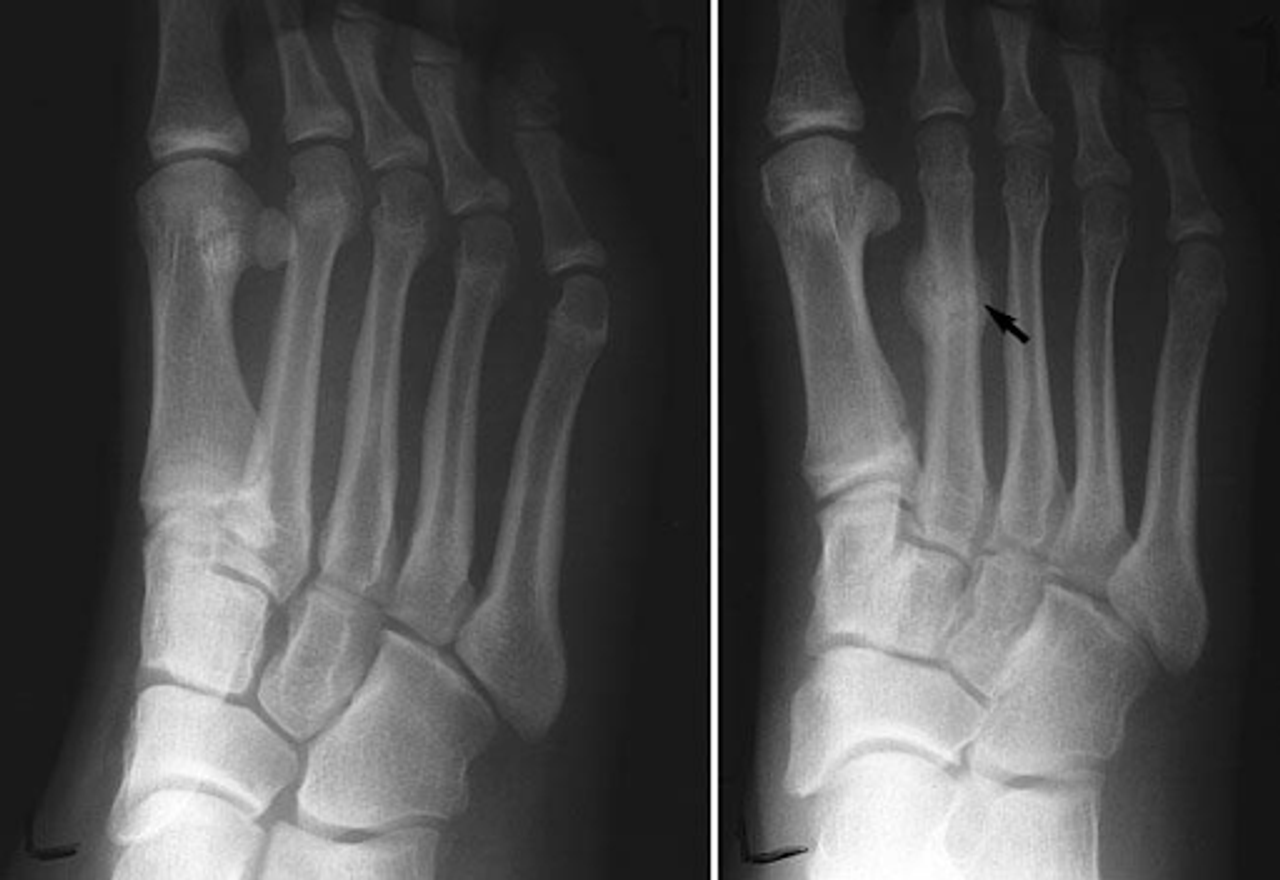How Orthotics Can Help Stress Fractures of the Foot | Orthotics Direct
Posted by Orthotics Direct on 2021 Aug 22nd
Stress fractures are tiny cracks in bones caused by repetitive impacts (hence the word “stress”). Think of it like any man made structure, whether it be a bridge or a skyscraper. Tiny yet constant impact forces can “chip away” at the structure until it weakens over time. Eventually, the structure may collapse altogether.
Your feet aren’t much different. The smallest trauma, recurring repeatedly over time can lead to stress fractures, which can become painful and lead to swelling. However, orthotic solutions can help reduce the impact of stress fractures and facilitate healing of the bone. This post will take a look at how they help.
Stress Fracture Causes
The bones of your feet can withstand a lot of weight and pressure. Think of Olympic athletes - gymnasts, runners, jumpers especially - who land on their feet constantly or forcefully. They do so with finesse and without injury.
Of course, they need to build up to that strength and this helps us understand how stress fractures begin.
They occur when someone increases the volume or intensity of an exercise too quickly. Naturally, and like muscles, bones adapt to increasingly heavier loads placed on them through a process called remodelling.
Essentially, a slightly heavier than usual load causes destroyed bone tissue to grow back stronger. That’s why after months or years of training, you can lift weight or jump with a force that would have injured you before.
Stress fractures occur when you place too much weight or force on bones before they are strong enough to handle them. There is a difference between the forces that cause a stress fracture versus those that cause and a regular fracture, however.
Loads which cause stress fractures are light enough for you to perform with feeling the strain but heavy enough to cause damage your bones can’t outpace. With that said, certain people are more prone to stress fractures compared to others.
Risk Factors for Stress Fractures
- Certain sports and exercises - High-impact sports that require tons of jumping and running can put athletes at a higher risk for stress fractures, especially those with less conditioning. These sports include basketball, track and field, gymnastics, dancing and tennis. Also, sedentary people who jump too quickly into an intensive exercise program are prone to stress fractures as well.
- Menstruation - Women who have abnormal or absent menstrual cycles are more likely to develop stress fractures. These women are at a higher risk because hormonal imbalances that affect their menstrual cycles also affect their bone density.
- Nutrient deficiencies - Anyone who is deficient in minerals or vitamins that build strong bones has an increased risk of stress fractures. Calcium and vitamin D are especially recognized for their role in bone injuries such as stress fractures.
- Weakened bones & foot problems - Individuals with bone disorders such as osteoporosis have a higher risk of developing stress fractures. Also, people who have flat feet or high arches are more likely to suffer from stress fractures as well.
- Previous stress fractures - If someone has had a stress fracture before, especially recently, then they will have a greater risk of getting another in the future. The risk is elevated if a previous stress fracture hasn’t fully healed yet.
Stress Fracture Symptoms
The interesting thing about stress fractures is that they’re virtually unnoticeable at first. But that doesn’t last forever. Usually, without treatment or a change in habits, the pain does become noticeable. A sufferer may experience tenderness at the site of the stress fracture. This tenderness often worsens upon activity and decreases at rest and there could swelling in the area.
How Orthotics Treat stress Fractures
If a doctor suspects you have a stress fracture, they will send you in for diagnostic imaging. MRIs are one of the more effective diagnostic imaging techniques since they can easily distinguish between stress fractures and soft tissue injuries. X-rays are effective as well, but they can only spot stress fractures that are several weeks old.
That’s why getting an x-ray shortly after your pain may not show any evidence of a stress fracture. Doctors also use bone scans to detect stress fractures, but these scans sometimes produce conflicting results.
Once diagnosed, your doctor will recommend treatments to help you manage a stress fracture. Treatment focuses on reducing weight-bearing loads on the foot. Doctors will often prescribe a walking boot or brace. Severe cases may require surgery.
Custom orthotics can also provide relief. They do so by correcting faulty limb movements that contribute to or aggravate stress fractures. They also help to cushion the foot and redistribute uneven weight and load on the foot. This takes the pressure off of the foot every time it lands on the ground. With less repetitive load placed on the foot, stress fractures will heal over time. This generally takes 6-8 weeks.
Preventing Stress Fractures is a Lifestyle Choice
You can’t prevent stress fractures 100%, but you can reduce the risk of getting one significantly. If you’re an active person, it’s important to gradually increase the volume and intensity of your exercises. This will give your feet (and other bones and muscles) to adapt to the loads you place on them.
It’s also important to rest and recover sufficiently after each workout. We also recommend wearing custom orthotics before you even have signs of a stress fracture. As we mentioned above, custom orthotics can reduce the pressure of weight-bearing movements on the foot, leading to less structural damage. By taking these steps, you can reach your personal bests without the pains of stress fractures.
Need help looking for orthotic solutions to deal with or prevent foot injuries? Get in touch with us so we can help you get started.

